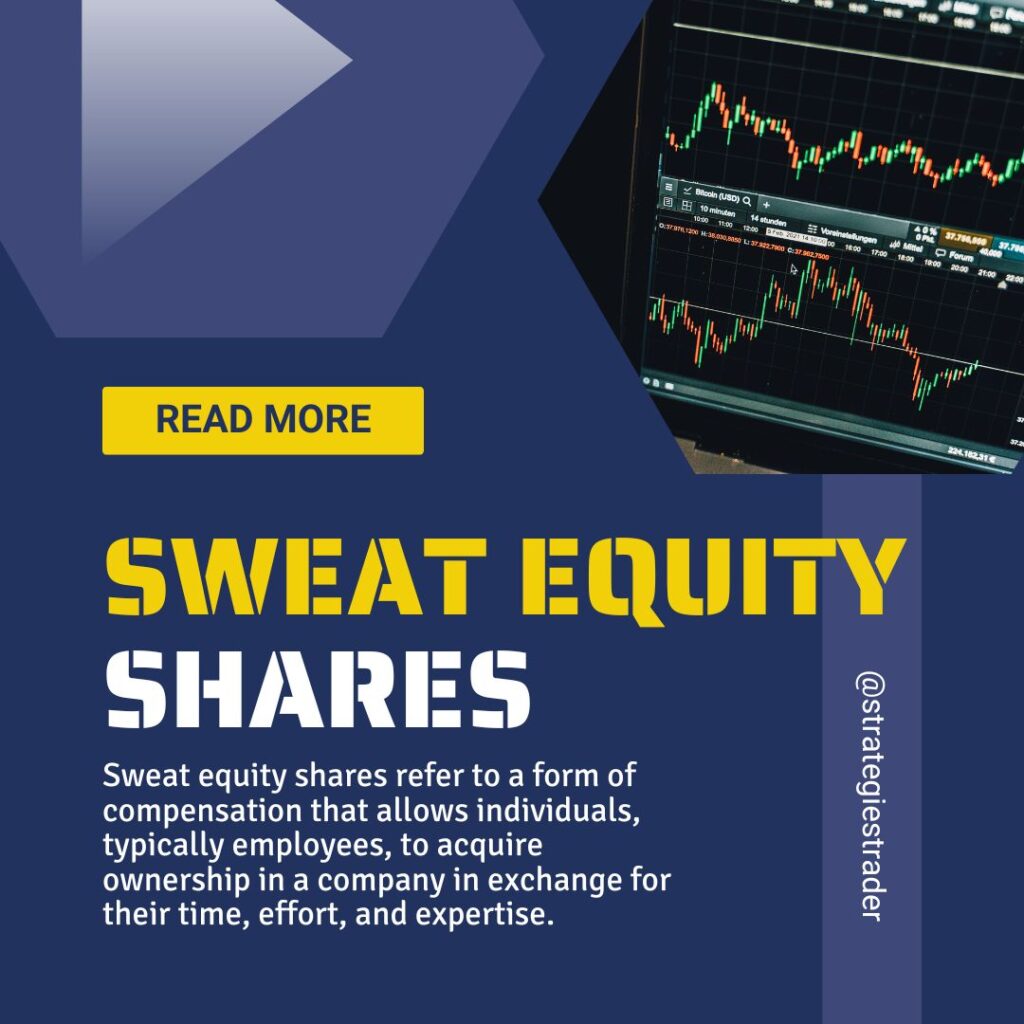In today’s business landscape, various methods of compensation and investment have emerged, adding depth and flexibility to how companies reward their stakeholders. One such method that has gained traction is the concept of sweat equity shares. In this article, we’ll delve into what sweat equity shares are, how they work, their benefits and drawbacks, and the legal considerations surrounding them.
1. Introduction to Sweat Equity Shares
Sweat equity shares refer to a form of compensation that allows individuals, typically employees, to acquire ownership in a company in exchange for their time, effort, and expertise. Unlike traditional compensation methods that involve monetary payments, sweat equity shares enable individuals to earn ownership stakes through their contributions.
2. What Sets Sweat Equity Shares Apart
Sweat equity shares stand out due to their non-monetary nature. Instead of receiving wages or salaries, individuals are rewarded with a share in the company. This aligns their interests with the company’s success, fostering a sense of ownership and commitment.
3. How Sweat Equity Shares Work
Sweat equity shares are typically granted based on a predetermined agreement between the company and the individual. The agreement outlines the conditions under which the shares will be earned and vested. Vesting periods are common, ensuring that individuals remain engaged with the company for a certain duration before fully owning the shares.
4. Benefits of Sweat Equity Shares
Sweat equity shares offer several benefits. Firstly, they motivate employees to contribute to the company’s growth as their efforts directly impact their ownership stakes. Secondly, they can attract top talent, especially in startups where cash flow might be limited. Additionally, sweat equity can enhance employee loyalty and retention.
5. Drawbacks of Sweat Equity Shares
However, sweat equity shares also come with drawbacks. Valuing these shares accurately can be challenging, potentially leading to disputes. Moreover, if an individual leaves the company before the shares are fully vested, complex situations can arise regarding the treatment of unvested shares.
6. Legal Aspects and Regulations
Sweat equity shares are subject to legal regulations that vary by jurisdiction. It’s essential for companies to adhere to these regulations to avoid legal complications. Consulting legal experts can ensure that the structure and implementation of sweat equity programs are in compliance with the law.
7. Factors to Consider Before Implementing Sweat Equity
Before implementing a sweat equity program, companies must consider factors such as the eligibility criteria, vesting schedules, valuation methods, and the overall impact on the existing ownership structure. Clear communication of these factors is crucial to prevent misunderstandings.
8. Sweat Equity vs. Traditional Compensation
Sweat equity shares differ significantly from traditional compensation models. While traditional compensation provides immediate financial rewards, sweat equity offers the potential for long-term wealth creation as the value of the company grows.
9. Real-world Examples of Sweat Equity
Companies like Microsoft and Apple have offered sweat equity shares to their employees in the past. These shares played a significant role in aligning employee interests with company success and driving innovation.
10. Tax Implications of Sweat Equity Shares
Taxation on sweat equity shares can be complex. The timing of taxation and the valuation of shares at different stages can impact the tax liability for both the individual and the company. Seeking tax advice is essential to navigate this aspect effectively.
11. Calculating the Value of Sweat Equity
Valuing sweat equity shares requires a meticulous approach. Factors such as the individual’s role, contribution, and the company’s growth potential come into play. Accurate valuation methods are crucial for maintaining fairness and transparency.
12. Ensuring Fairness and Transparency
To ensure fairness, companies must establish clear guidelines for earning and distributing sweat equity shares. Transparency in communication and decision-making fosters trust among employees and stakeholders.
13. Sweat Equity in Startups vs. Established Companies
Sweat equity shares hold distinct advantages for startups, where cash resources might be limited. In contrast, established companies can leverage these shares to reward long-serving employees and retain key talent.
14. Case Studies of Successful Sweat Equity Programs
The success stories of companies like Google, where early employees reaped substantial rewards through sweat equity shares, showcase the potential of such programs in driving growth and innovation.
15. The Future of Sweat Equity Shares
As businesses continue to evolve, sweat equity shares could become more prevalent. With the rise of remote work and the gig economy, companies might explore innovative ways to implement sweat equity programs that cater to changing work dynamics.
Conclusion
Sweat equity shares offer a dynamic approach to compensation and ownership in today’s business landscape. By allowing individuals to earn ownership through their contributions, companies can foster a deeper sense of commitment and engagement. However, careful consideration of legal, financial, and structural aspects is vital to ensure the success and fairness of sweat equity programs.
FAQs
1. Are sweat equity shares taxable?
Yes, sweat equity shares can be subject to taxation, and the timing and valuation of shares play a role in determining the tax liability.
2. Can sweat equity be offered in publicly traded companies?
Yes, sweat equity can be offered in both privately held and publicly traded companies, although the process and regulations might differ.
3. How is the value of sweat equity shares calculated?
The value of sweat equity shares is calculated based on various factors, including the individual’s contribution, role, and the company’s growth potential.
4. What happens if an employee leaves before the shares are vested?
If an employee leaves before the shares are fully vested, the treatment of unvested shares depends on the terms outlined in the agreement.
5. Are sweat equity shares a common practice?
Yes, sweat equity shares are increasingly being adopted by companies, especially startups, to incentivize employees and align their interests with company success.

